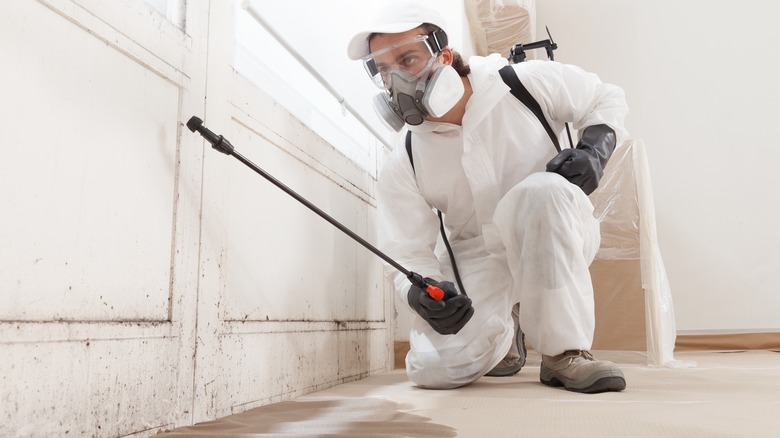A Silent Threat in the Air
Mold doesn’t announce itself with loud noises or flashing lights. It creeps in quietly, thriving in the dark corners of bathrooms, basements, attics, and even behind the walls. What might start as a faint musty smell or a small discolored patch on the ceiling can quickly spiral into a larger problem that affects not just your home’s structure but also your health.
For many homeowners, the challenge begins with identifying whether the issue even exists. Mold is often hidden, invisible to the naked eye, and easily mistaken for simple dirt or water stains. That’s where professional mold inspection and remediation come into play, not as separate services, but as two sides of the same coin.
The inspection process is your first line of defense, and it sets the stage for a successful cleanup. A page like the one on the san diego inspectors company site highlights just how critical that initial step is. Without it, mold remediation can miss the mark entirely.
Mold Remediation is Only as Good as the Inspection Before It
If you think of mold removal as a surgical procedure, then the inspection is the diagnostic scan that tells the surgeon exactly where to cut. Without a proper diagnosis, even the most advanced cleanup methods could miss major problem areas, leaving behind active mold colonies that will just keep growing.
This is why you’ll often find companies offering both services or working closely with partners to provide a full solution. On the www.quickdry.com website, the emphasis is on the aftermath: the cleanup, containment, and decontamination. But even the best remediation strategy can be wasted if it’s based on incomplete or inaccurate information.
Think of it like treating a fever without knowing what’s causing it. You might feel better for a while, but unless the root cause is addressed, the symptoms will return, and often worse than before. Mold behaves the same way. It will find its way back if the moisture problem remains unresolved or if some colonies are missed because no one thought to check the crawl space or behind the drywall.
Why DIY Mold Removal Can Be a Risky Gamble
When faced with a patch of mold, some homeowners reach for the nearest bottle of bleach and get to scrubbing. It’s understandable, we all want quick, affordable solutions. But mold, especially the kind that festers behind walls or under floors, doesn’t respond well to surface treatments. Bleach may kill surface-level spores, but it rarely penetrates the porous materials where mold thrives.
Moreover, improper cleaning methods can release spores into the air, spreading them to other areas of the home. Without containment strategies in place, like negative air pressure and sealed-off zones, you might unintentionally worsen the problem.
That’s why the combined approach of inspection and remediation, done by professionals, is crucial. A certified inspector knows where to look, what to sample, and how to interpret the results. Once the scope is clear, a remediation team can move in with a targeted plan that includes everything from air filtration and HEPA vacuuming to full material removal when necessary.
From Suspicion to Solution: A Look at the Process
The journey typically begins with suspicion. Maybe someone in the house is experiencing chronic allergies, or there’s an earthy odor you just can’t get rid of. The inspection process starts with a visual assessment, followed by moisture readings and sometimes air or surface sampling. This helps determine not just whether mold is present, but what kind of mold and how far it’s spread.
Once the inspector finishes their evaluation, they’ll provide a report outlining the findings. This isn’t just a formality, it’s the blueprint for remediation. Armed with this information, the remediation team can approach the problem with surgical precision, removing only what’s necessary while ensuring nothing is missed.
Containment is often the first step, sealing off the affected area to prevent airborne spores from drifting into clean zones. Industrial-grade air scrubbers are used to clean the air, while damaged materials like drywall, carpeting, or insulation may be removed and replaced. The final step usually involves applying antimicrobial treatments to prevent future growth and scheduling a follow-up test to confirm the job is complete.
Prevention is the Ultimate Goal
Mold thrives on moisture. Leaky pipes, poor ventilation, condensation, and even humid air can create the perfect breeding ground. Once the remediation is complete, the focus should shift to prevention. Homeowners are often advised to address underlying causes, fix plumbing leaks, install dehumidifiers, improve air circulation, or upgrade insulation where needed.
Education is part of prevention. One of the most valuable services an inspector provides is guidance, showing you what to watch for and how to minimize the risk going forward. This isn’t just about peace of mind; it’s about safeguarding your investment and your health.
A Partnership for a Healthier Home
Mold control isn’t a one-person job. It requires a team: skilled inspectors who understand how mold behaves, and remediation experts who know how to eliminate it safely and thoroughly. When these two services are aligned, the result is a cleaner, healthier living environment.
A quick cleanup is tempting, but it rarely offers long-term relief. Mold is persistent, and unless every step, from detection to elimination to prevention, is handled with care, it will find its way back. That’s why homeowners who take the time to partner with both inspectors and remediation specialists are often the ones who enjoy real, lasting results.
In the end, protecting your home means addressing mold at its source, not just wiping away the symptoms. When in doubt, start with an inspection. It could be the most important step you take toward a safer home.
